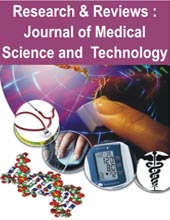
Hui-Chol Kang,
Abstract
Acute RVMI (right ventricular myocardial infarction), which would be possibly followed by bradycardia-induced shock, may perpetuate a vicious circle very quickly and result in short-term adverse outcomes as cardiac arrest and long-term outcomes as angina pectoris or recurrent myocardial infarction. In order to block this circle, emergent combination of temporary pacing and PTCA (percutaneous transluminal coronary angioplasty) may be necessary, and especially, in unexpected case that the occlused lesion is long, another addition of ICT (intracoronary thrombolysis) may improve outcomes. The presented case highlights the efficacy of a multifaceted approach in managing acute right ventricular myocardial infarction (RVMI) complicated by high-grade bradycardia-induced shock in a 65-year-old patient. This comprehensive strategy involved the synergistic use of temporary pacing, percutaneous transluminal coronary angioplasty (PTCA), and intra-aortic balloon counterpulsation therapy (ICT) to mitigate the risk of cardiac death. By swiftly addressing both the underlying myocardial infarction through PTCA and the hemodynamic instability through temporary pacing and ICT, the patient’s condition was stabilized, averting potentially fatal consequences. This integrated intervention paradigm underscores the importance of tailored, multidisciplinary approaches in critical cardiac scenarios, particularly in cases of acute inferior myocardial infarction with concomitant right coronary artery occlusion leading to profound bradycardia-induced shock. Such combined interventions not only serve as a resuscitative measure but also significantly contribute to favorable prognostic outcomes in these high-risk clinical contexts.
Keywords: Acute RVMI, bradycardia-induced shock, percutaneous transluminal coronary angioplasty (PTCA), intracoronary thrombolysis (ICT), cardiac arrest, angina pectoris, temporary pacing, cardiac death.
[This article belongs to Research & Reviews : A Journal of Medical Science and Technology(rrjomst)]
References
- Feigl D, Ashkenazy J, Kishon Y. Early and late atrioventricular block in acute inferior myocardial infarction. Journal of the American College of Cardiology. 1984 Jul 1;4(1):35–8.
- Killeavy ES, Ferguson III JJ. The use of temporary transvenous pacing catheters during percutaneous transluminal coronary angioplasty. Texas Heart Institute Journal. 1990;17(1):37.
- Masahide, H. A. R. A., et al. “Angiographical Determination of the Strategy of Reperfusion Therapy: Intracoronary Thrombolysis of Direct PTCA?.” Japanese circulation journal 60.7 (1996): 438–438.
- Ishibashi-Fumiyuki et al., Combined revascularization strategy for acute myocardial infarction in patents with, Japanese-Circulation-Journal. [print] April, 2001; 65 (4): 251–256.
- Goldstein JA. Pathophysiology and management of right heart ischemia. Journal of the American College of Cardiology. 2002 Sep 4;40(5):841–53.
- Zehender M, Kasper W, Kauder E, Schonthaler M, Geibel A, Olschewski M, Just H. Right ventricular infarction as an independent predictor of prognosis after acute inferior myocardial infarction. New England Journal of Medicine. 1993 Apr 8;328(14):981–8.
- Goldstein JA, Lee DT, Pica MC, Dixon SR, O’Neill WW. Patterns of coronary compromise leading to bradyarrhythmias and hypotension in inferior myocardial infarction. Coronary artery disease. 2005 Aug 1;16(5):265–74.
- Lambert L, Brown K, Segal E, Brophy J, Rodes-Cabau J, Bogaty P. Association between timeliness of reperfusion therapy and clinical outcomes in ST-elevation myocardial infarction. Jama. 2010 Jun 2;303(21):2148–55.
- Brodie BR, Stuckey TD, Wall TC, Kissling G, Hansen CJ, Muncy DB, Weintraub RA, Kelly TA. Importance of time to reperfusion for 30-day and late survival and recovery of left ventricular function after primary angioplasty for acute myocardial infarction. Journal of the American College of Cardiology. 1998 Nov 1;32(5):1312–9.
- Cannon CP, Gibson CM, Lambrew CT, Shoultz DA, Levy D, French WJ, Gore JM, Weaver WD, Rogers WJ, Tiefenbrunn AJ. Relationship of symptom-onset-to-balloon time and door-to-balloon time with mortality in patients undergoing angioplasty for acute myocardial infarction. Jama. 2000 Jun 14;283(22):2941–7.
- Berger PB, Ellis SG, Holmes Jr DR, Granger CB, Criger DA, Betriu A, Topol EJ, Califf RM. Relationship between delay in performing direct coronary angioplasty and early clinical outcome in patients with acute myocardial infarction: results from the global use of strategies to open occluded arteries in Acute Coronary Syndromes (GUSTO-IIb) trial. Circulation. 1999 Jul 6;100(1):14–20.
- Nallamothu BK, Bates ER. Percutaneous coronary intervention versus fibrinolytic therapy in acute myocardial infarction: is timing (almost) everything?. The American journal of cardiology. 2003 Oct 1;92(7):824–6.
- McNamara RL, Wang Y, Herrin J, Curtis JP, Bradley EH, Magid DJ, Peterson ED, Blaney M, Frederick PD, Krumholz HM, NRMI Investigators. Effect of door-to-balloon time on mortality in patients with ST-segment elevation myocardial infarction. Journal of the American College of Cardiology. 2006 Jun 6;47(11):2180–6.
- Juliard JM, Feldman LJ, Golmard JL, Himbert D, Benamer H, Haghighat T, Karila-Cohen D, Aubry P, Vahanian A, Steg PG. Relation of mortality of primary angioplasty during acute myocardial infarction to door-to-Thrombolysis In Myocardial Infarction (TIMI) time. The American journal of cardiology. 2003 Jun 15;91(12):1401–5.
- Brodie BR, Gersh BJ, Stuckey T, Witzenbichler B, Guagliumi G, Peruga JZ, Dudek D, Grines CL, Cox D, Parise H, Prasad A. When is door-to-balloon time critical? Analysis from the HORIZONS-AMI (harmonizing outcomes with revascularization and stents in acute myocardial infarction) and CADILLAC (controlled abciximab and device investigation to lower late angioplasty complications) trials. Journal of the American College of Cardiology. 2010 Jul 27;56(5):407–13.

Research & Reviews : A Journal of Medical Science and Technology
| Volume | 13 |
| Issue | 01 |
| Received | December 2, 2023 |
| Accepted | February 6, 2024 |
| Published | April 1, 2024 |

